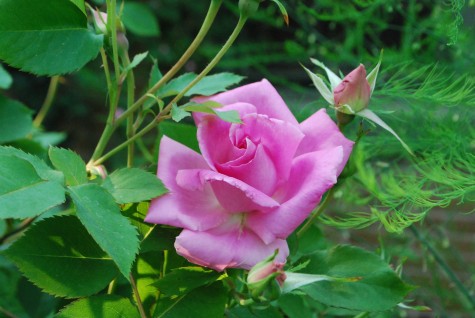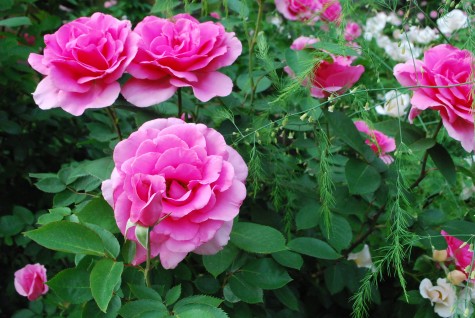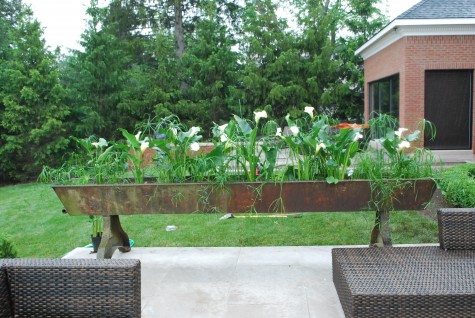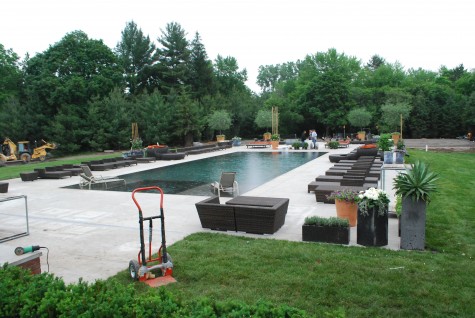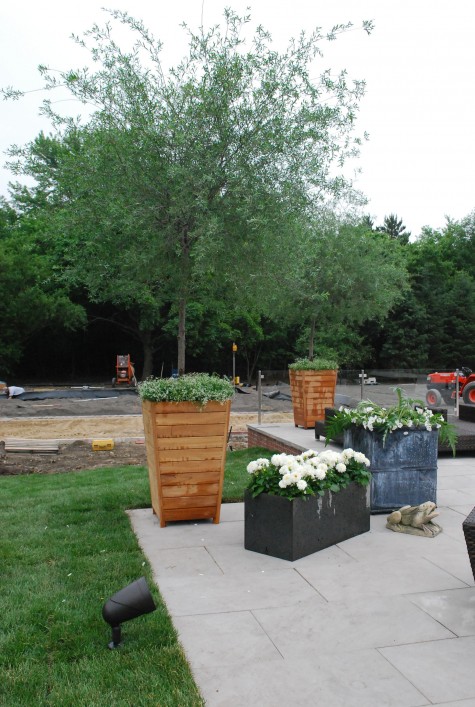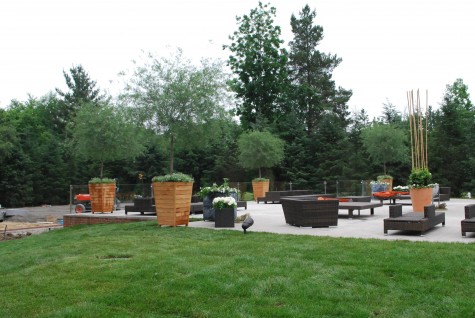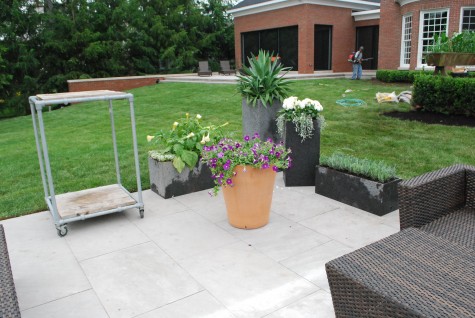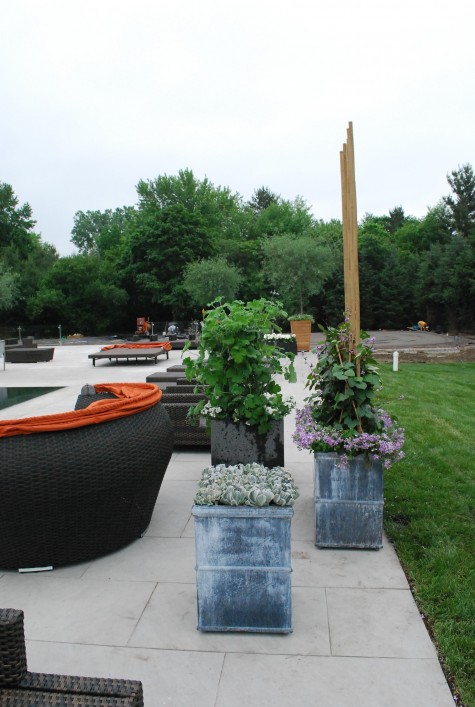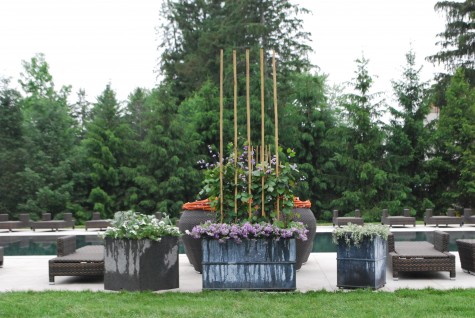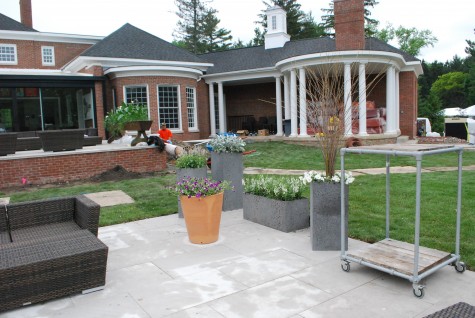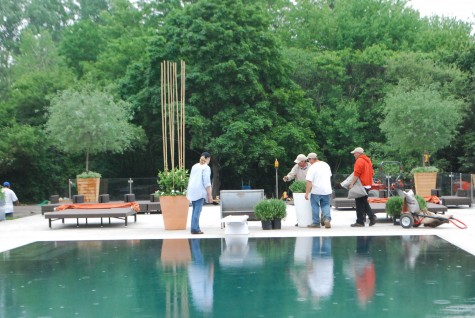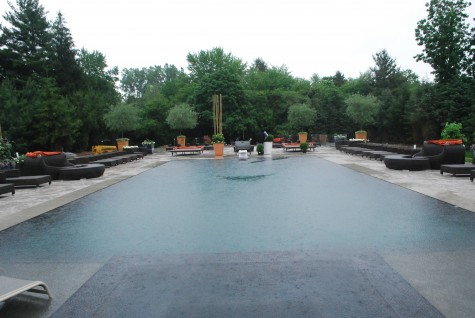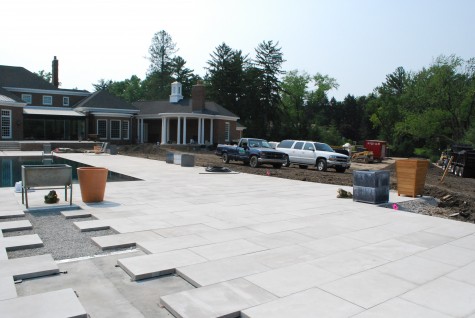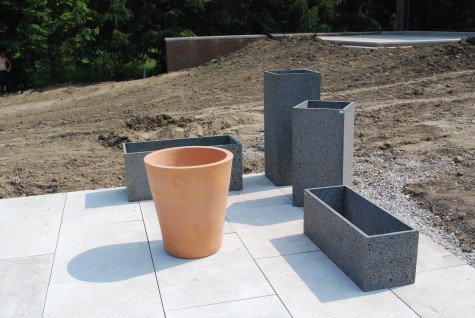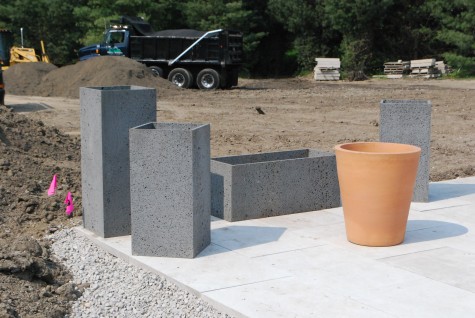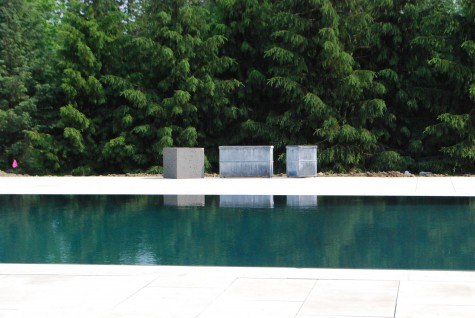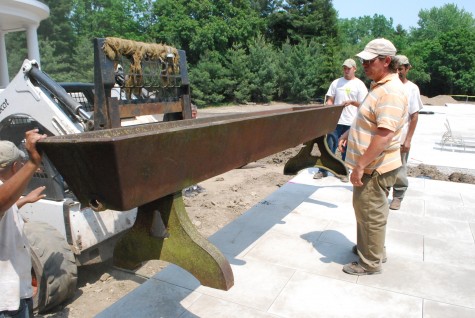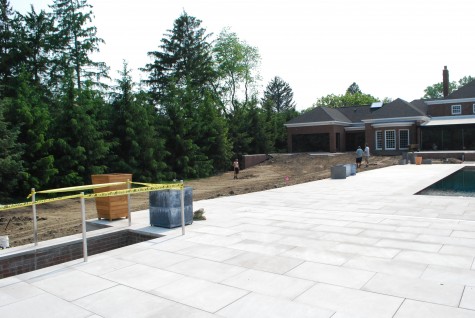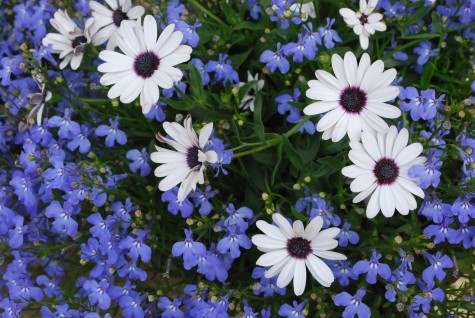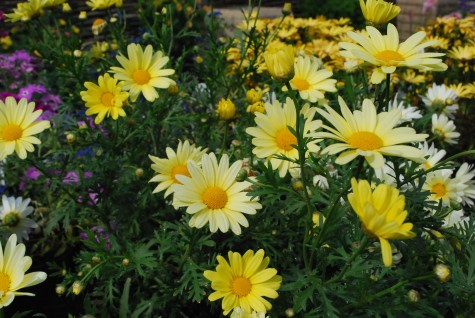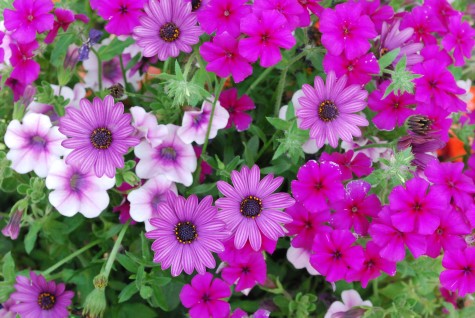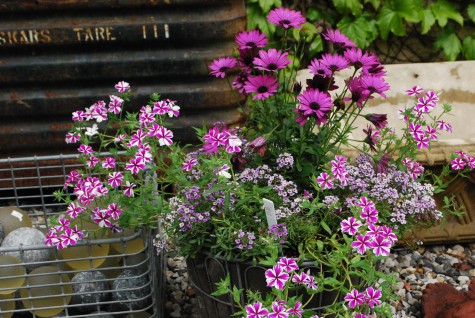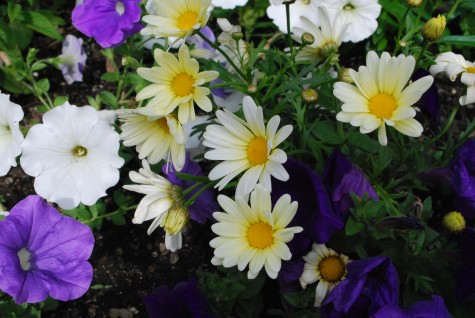The thought of June inevitably brings roses to mind. How I love them. The shapes and fragrance are like no other flower. That said, there is no other flower could possibly be as much trouble to cultivate as a rose-that is part of their attraction.. My Mom had a hedge of tea roses that stretched all along one side of her garden. Every year she made replacements. I can still remember the names of some her favorites-Peace, Chrysler Imperial, and the luscious Tropicana. Some years were worse than others for the aphids and the blackspot-but she persisted in renewing and growing that rose hedge. There are those plants that are annuals for me, no matter the popular horticulture. Hemlocks, azaleas, columbines-and most certainly tea roses.
Of course the worst tea rose trouble was the lack of hardiness in my zone. Al Goldner had me pot up, sweat, and bring on several thousand hybrid tea roses for his nursery in the mid 1980’s. At least from him I learned to bury the graft 2 to 3 inches below ground. The frozen soil would act like a cast around the most fragile part of tea rose life-that graft. Another annoying fact of life-their susceptibility to every fungal disease including blackspot. One day I marched into his office, and wrinkled my nose about the tea roses. He was famous for giving any employee enough rope to hang themselves-I was no exception. I bought my first collection of roses from Hortico in Canada, and spent a few tense hours trying to explain to Customs why I was trying to bring a pickup truck load of bareroot roses into the US with no phytosanitary certificate.
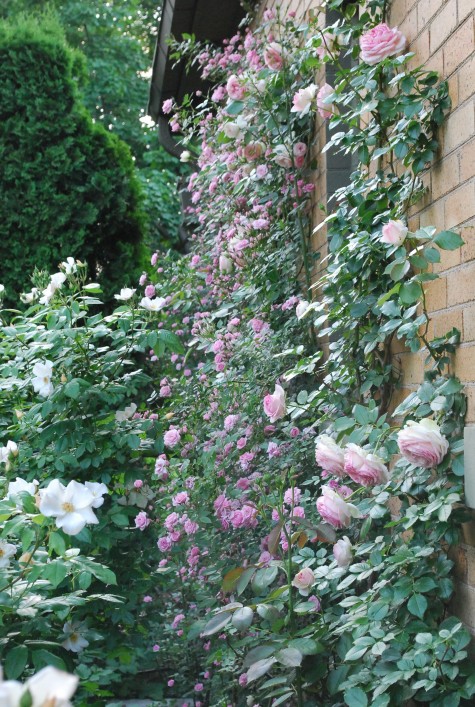 For whatever reason, they waved me through. That first collection? 5 David Austin varieties. A group of Rugosa roses, including Blanc Double de Coubert, Fimbriata and Scabrosa. A good collection of species roses-Rosa Rubrifolia (now of another name I can never remember) Rosa Canina, Rosa Complicata, Rosa Setigera. Another group of vintage and old fashioned roses from a number of different groups. The Canadian Explorer roses. And of course, a collection of Griffith Buck roses.
For whatever reason, they waved me through. That first collection? 5 David Austin varieties. A group of Rugosa roses, including Blanc Double de Coubert, Fimbriata and Scabrosa. A good collection of species roses-Rosa Rubrifolia (now of another name I can never remember) Rosa Canina, Rosa Complicata, Rosa Setigera. Another group of vintage and old fashioned roses from a number of different groups. The Canadian Explorer roses. And of course, a collection of Griffith Buck roses.
 Al Goldner had an interest in anyone who bred and grew plants. He himself bred and grew daylilies, specifically for use in the landscape. He grew them without much in the way of irrigation, and no fertilization. He wanted plants that would grow under less than optimal conditions. I had the same idea in mind with my collection of old fashioned and shrubs roses.
Al Goldner had an interest in anyone who bred and grew plants. He himself bred and grew daylilies, specifically for use in the landscape. He grew them without much in the way of irrigation, and no fertilization. He wanted plants that would grow under less than optimal conditions. I had the same idea in mind with my collection of old fashioned and shrubs roses.
 At that time I had almost 5 acres of land-I could grow shrub roses, and never have to worry about how much room was required. Now I have a very small yard, and even less time to devote to growing roses. So my small collection is highly edited. The climbing Jeannie le Joie and Eden take up no space on the ground plane. Eden has that irrestibly old fashioned rose look. The only work I put to them is trying to keep the canes attached to the brick.
At that time I had almost 5 acres of land-I could grow shrub roses, and never have to worry about how much room was required. Now I have a very small yard, and even less time to devote to growing roses. So my small collection is highly edited. The climbing Jeannie le Joie and Eden take up no space on the ground plane. Eden has that irrestibly old fashioned rose look. The only work I put to them is trying to keep the canes attached to the brick.

Sally Holmes is the one giant shrub rose I cannot live without. Peach colored buds open to reveal single 5-petalled white flowers. I have stakes all over in support of this big lax shrub. The foliage is large, dark green, and glossy-top to bottom.
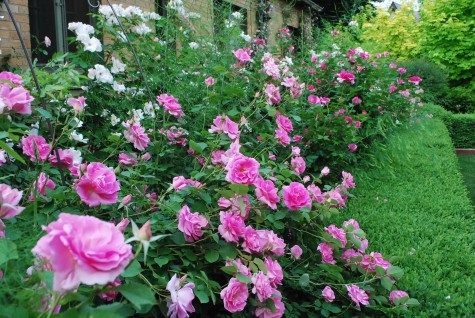 In the front, I have alternated the Griffith Buck roses Carefree Beauty, and Earthsong. Somone suggested that Earthsong was even more carefree than Carefree Beauty. I cannot really tell the difference. But I can speak to how I have a little time in June with an embarrassment of riches in roses with virtually no work on my part.
In the front, I have alternated the Griffith Buck roses Carefree Beauty, and Earthsong. Somone suggested that Earthsong was even more carefree than Carefree Beauty. I cannot really tell the difference. But I can speak to how I have a little time in June with an embarrassment of riches in roses with virtually no work on my part.
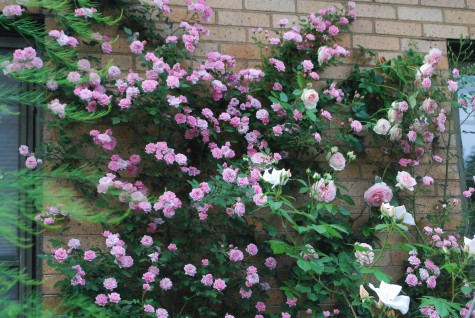 I do prune in the spring. I do deadhead after the first big flush of flowers. And I may spray several rounds of fungicide if blackspot takes hold-but by and large I do next to nothing except look at them. The second flush of flowers is nothing like this moment-but I do not hold that against these roses. The Knockout series of roses has great disease resistance and good rebloom, but they just do not appeal to me in the same way.
I do prune in the spring. I do deadhead after the first big flush of flowers. And I may spray several rounds of fungicide if blackspot takes hold-but by and large I do next to nothing except look at them. The second flush of flowers is nothing like this moment-but I do not hold that against these roses. The Knockout series of roses has great disease resistance and good rebloom, but they just do not appeal to me in the same way.
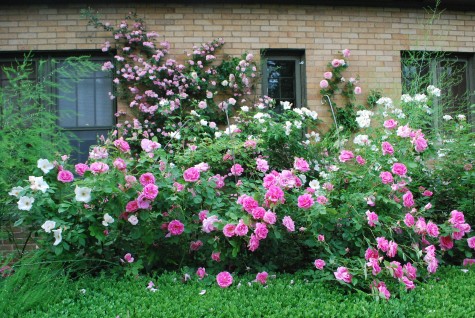
My small patch of roses are the best ever this year. This is saying a lot. I have had them at least 7 or 8 years. I have never had to replace one. I do have drip irrigation in this bed, which I rarely use. These roses are very tolerant of the Japanese anemone, boltonia and hardy hibiscus that live there as well. Given more property and time there are plenty of roses I would grow. But given the constraints of my circumstances, I have a little patch of roses representing every June that suits me just fine.
